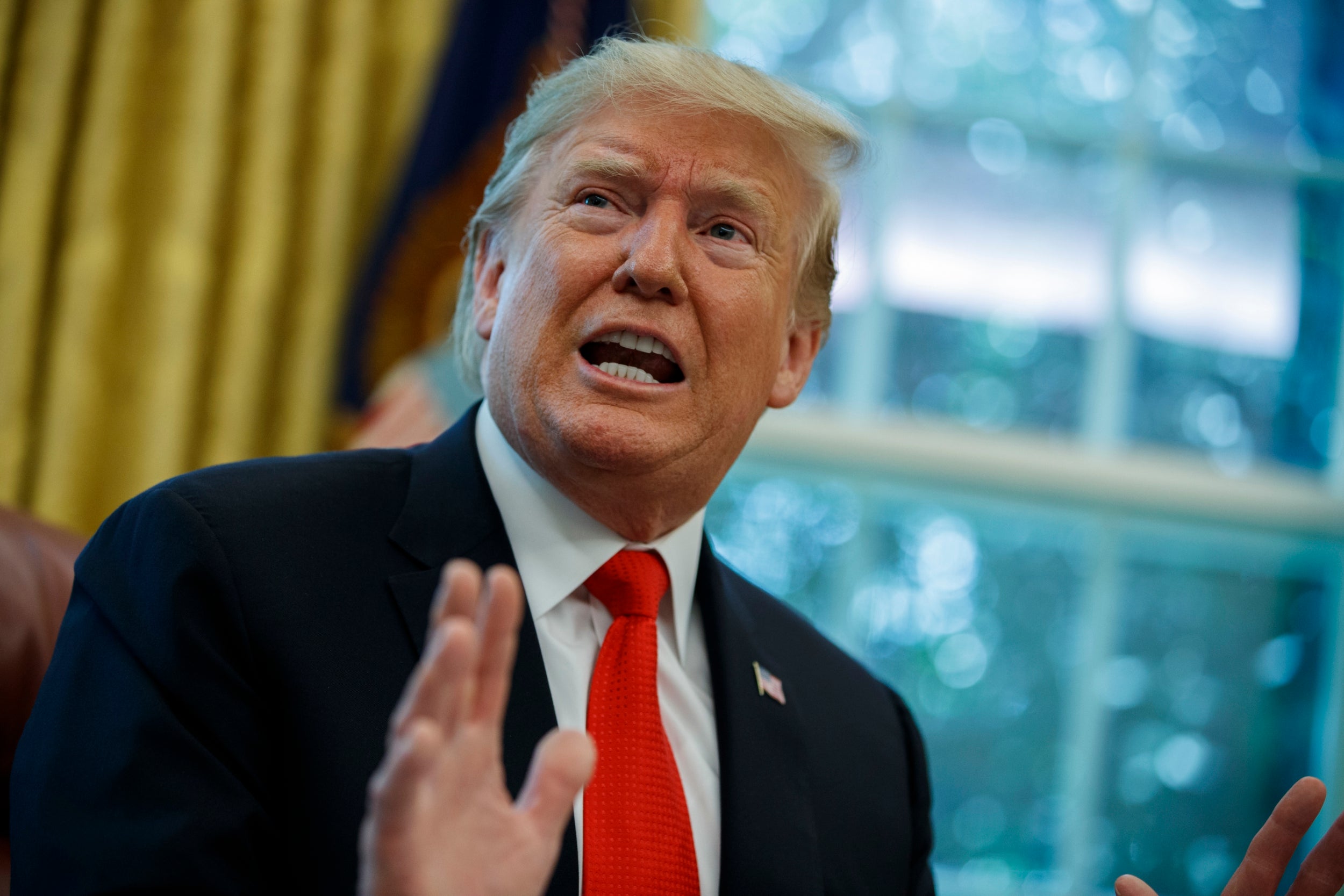The Independent's journalism is supported by our readers. When you purchase through links on our site, we may earn commission.
The August jobs report shows how badly Trump has let down the people he promised to help
The mining and coal sector, whose beleaguered voters played a pivotal role in Trump’s 2016 electoral victory, lost 2,000 jobs. And even the triumphs aren't really triumphs when you dig into the numbers

Your support helps us to tell the story
From reproductive rights to climate change to Big Tech, The Independent is on the ground when the story is developing. Whether it's investigating the financials of Elon Musk's pro-Trump PAC or producing our latest documentary, 'The A Word', which shines a light on the American women fighting for reproductive rights, we know how important it is to parse out the facts from the messaging.
At such a critical moment in US history, we need reporters on the ground. Your donation allows us to keep sending journalists to speak to both sides of the story.
The Independent is trusted by Americans across the entire political spectrum. And unlike many other quality news outlets, we choose not to lock Americans out of our reporting and analysis with paywalls. We believe quality journalism should be available to everyone, paid for by those who can afford it.
Your support makes all the difference.The American economy is slowing – and Trump should be worried.
America’s August jobs report is in, and it isn’t the rosy picture President Donald Trump hoped. For Trump, the news worsens an already precarious electoral situation.
Faced with slumping crop prices, declining manufacturing and anemic domestic growth, Trump hopes Americans will be wowed by the 130,000 new jobs added in August. Look closer and you’ll see the cracks in the plaster.
Hidden in the data is the fact that nearly 30,000 of those new jobs are temporary positions created to assist the US Census. That means the American economy created only 100,000 private sector jobs last month, well below the three-month average of 190,000. That disappointing number comes after sharp downward revisions to job growth numbers for June and July.
Most of that job growth came at the lower-paid end of the service sector. The data show these aren’t the plum positions the Trump administration would have Americans believe – and Trump’s own labor researchers are now cautioning that these jobs may not be enough to keep budget-strapped American families afloat.
According to a recent study by the Bureau of Labor Statistics, 7 in 10 of the next decade’s fastest-growing job sectors will pay employees at or near the national poverty line. This includes personal care aides ($24,000 annually), restaurant cooks ($26,530), medical assistants (33,610), waiters ($21,780) and janitors ($26,110).
Manufacturing added only about 4,000 new manufacturing jobs in August. The mining and coal sector, whose beleaguered voters played a pivotal role in Trump’s 2016 electoral victory, lost 2,000 jobs. That’s hardly in line with Trump’s pledge to bring tens of thousands of coal jobs back to declining Rust Belt communities.
Working class wages have also stagnated, hovering at between 2 to 3 per cent annual growth for the past decade – during which time corporate profits and C-suite compensation packages have grown hundreds of times over. Toss on the added weight of rising healthcare costs and you’ve created a recipe for electoral peril.
Adding to Trump’s economic woes, the manufacturing industry slid into recession this quarter after a major contraction largely due to a spiraling trade standoff with China. The recovery of American manufacturing has been a cornerstone of the Trump campaign since his earliest public outings. The August jobs report offers little optimism for a manufacturing comeback.
Federal Reserve modeling warns that time may be running out for the longest economic expansion in American history. On September 3, the Atlanta Federal Reserve reduced its estimate for third quarter GDP growth to an anemic 1.7 per cent. That’s a sharp downward slope from the ho-hum 2 per cent figure the Atlanta Fed predicted less than a week ago.
Donald Trump doesn’t bear all the blame for America’s economic dysfunction. Wages stagnated long before he emerged as a political entity. Healthcare costs have been rising since the Nixon administration. But Trump does deserve criticism for worsening already acute economic problems with short-sighted spending decisions and his ruinous trade standoff with the China.
The Federal Reserve is prepared to lower interest rates three more times in the coming year as America fights off growing global economic headwinds. Former Fed Chairman Alan Greenspan warned that, absent an unexpected burst of global growth, the United States may soon face negative interest rates similar to those bedeviling European governments. No one is certain those steps will be enough.
What America needs is consistent, credible leadership. Trump will almost certainly fabricate excuses for the uneven growth in wages and job opportunities, especially among his core demographics. But institutional investors and world governments see through such misdirections. There are growing signs the struggling workers that make up Trump’s unique political base are starting to see through them, too.
If the economy veers into full-on recession early next year, as over a third of institutional investors predict, the downturn could take Trump with it in 2020.
Max Burns is a veteran Democratic strategist and senior contributor at Millennial Politics. He regularly makes appearances on Fox News, Fox Business, and Bloomberg Radio. Follow him on Twitter @TheMaxBurns
Join our commenting forum
Join thought-provoking conversations, follow other Independent readers and see their replies
Comments